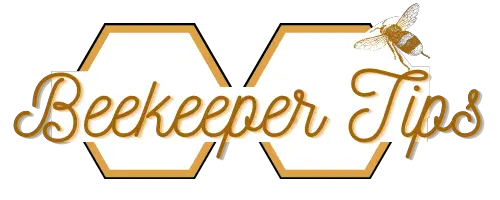We take a look at how to separate honey from beeswax. This may sound simple, but not understanding how to do this has resulted in many people burning barns, houses, and sheds to the ground. I have a tried and tested method that is fun. Join me on a walk through the history and adventure of separating beeswax – and trust me, this is way more fun than it sounds right now.
To begin this journey into understanding how to separate honey from beeswax let us meander back in time to a central African woodland. Here our ancestors were wandering between tall miombo woodland trees. It was about midday, and the water was finished. Rivers were a scary place in ancient times – crocodiles, lions, leopards, hippos, and all manner of scary things lurk near river banks. Fetching water from rivers is dangerous. Even now, when I work in central Africa, rivers give me the heebie-jeebies.
Trees in central Africa develop crown cracks from elephant damage. These rot and fill up with water in the rainy season. If you are short of water shimmy up a baobab or miombo tree. You find the hole in the tree and scoop out a nice bit of water in an ostrich shell or similar implement.
In a sudden twist to this story, we must remember the honeybee is a cavity-nesting bee. What if a swarm of bees moved into one of these cavities in a tree in the dry season when the trees flower. They filled the cavity with honey. Now the cavity is filled with rainwater in the rainy season. Sugar from the honey naturally dissolved into the water. Natural yeasts in the hive activated fermentation – honey got turned to alcohol.
Table of Contents
The First Big Crazy Party
We do not know when it happened. But hundreds of thousands of years ago, in a central African woodland or forest, our ancestors found a tree with “water” in it. This water was fermented beehive – also known as mead or honey wine. It probably had about 15-18% alcohol and was sweet. Our friendly hunter-gatherers were probably delighted at the magic of this lovely sweet water that tasted so much nicer than regular water. Within ten to fifteen minutes everyone was unable to walk. Crazy things happened and humans took a new step towards becoming a biotechnology-driven species.
After everyone recovered and emptied the tree, they would have found comb left floating in the mead in the tree. This comb was pure beeswax. It was a great firelighter, could be used as an ingredient for skin treatments. Ochre and beeswax are commonly used as a type of sun protectant in Africa. Beeswax was also great for strengthening the sinews and threads used for bowstrings.
From here, our ancestors quickly learned that you can mix honeycomb and water and make mead. After this, the wax that is left is easy to separate and render into beeswax. You can use this for whatever purpose floats your boat. Oh yes, it was used to seal boats and stop leaks among other things.
Moving To Modern Times
Extracting Honey Versus Crushing Combs
We have two first steps with regards to separating honey from combs. In the most efficient form, we reinforce the combs with wire and in some cases mesh or plastic sheet. Harvested reinforced combs in frames are uncapped. The capping layer covering the honey is removed and the combs are placed in a honey extractor. This extractor spins the combs and the honey is spun out. The nearly empty combs can then be replaced on a hive to be refilled.
Learn more about:Â The Best Plants For Honey Production
Extracting combs and replacing them to be refilled is relatively efficient, as the bees do not need to keep making as much wax. This allows increased unit honey production.
If you keep bees in top bar hives or some system where the combs are not reinforced, separating honey from combs normally takes a different route. In this method, we would normally crush the combs first and then strain the wax out. You can then crush the comb again to remove more honey, and sieve in a finer mesh sieve.
Settling Honey
Both of the above methods will produce some honey which is largely clear. This can be strained, settled, or even filtered depending on what technology you have access to. I believe in settling honey if you are cleaning relatively small quantities. Just place the honey in a bucket, and allow it to settle. Wax is lighter than honey and floats to the top. Grit and heavy things sink to the bottom. The top layer can be scooped off taken to the next step.
How To Separate Honey From Beeswax
If you have extracted your honey you will have capping wax, which is rich in honey and wax. If you have crushed your comb, you will have the strained comb, which is rich in wax. Hene the two routes now converge on this point. How do we separate these wax-rich mixtures?
I normally leave capping or finely crushed comb in a bucket. The wax floats to the top. Honey settles to the base, and you can do this a few times until you have a bucket of 60-70% wax and a bit of honey. Beekeepers will normally render this wax to recover the beeswax. The honey from rendering is normally a bit burnt and is often thrown away. Now we need to go back to what our ancestors did to be more sensible.
Rendering Wax
Place your wax and honey mixture in a container in a double boiler. A double boiler is a container of water that is heated. The wax/honey container is placed in this container. The reason we use a double boiler is that beeswax is very very flammable. If you heat beeswax directly and it happens to catch alight it is very difficult to put out. It burns with great heat and can destroy your house/shed/barn, etc in no time at all. With a double boiler, you know the warmest your wax can get is boiling temperature which is below its flash point (where it catches alight).
If beeswax catches alight, do not throw water on it – this will create a catastrophic explosion. The best is to cover the burning wax with a fire blanket. If you do not have that, a metal lid or cover works. Place sand over the blanket/lid, and try to smother the flame. Burning wax can create terrible burns on a person. It is critically important to treat beeswax with the utmost care when rendering.
After the wax and honey mixture has melted, pour it through a fine cloth such as an old pillowcase, or mutton cloth/cheesecloth. I normally just pour the whole mixture into a large metal pot and allow it to cool overnight. In the morning you will find a big wax plug on the top, and a layer of burnt dark honey on the bottom. Burnt honey is great for cooking. Use it to add color to cakes, as a glaze on pork, and many other uses.
Making Mead
How to separate honey from beeswax like a legend! Just rinse the combs and then use the rinse water to make mead. Mead is that alcoholic beverage made by mixing honey with water and allowing it to ferment. The simplest mead recipe on Earth makes a lovely sherry mead.
Rinse your combs with water – the rinse water can be fortified by adding more honey until a fresh egg floats in it. This means the density of the solution is such that you can ferment the honey sugar into alcohol, and still have enough leftover honey sugar that your product will be sweet. Put this mixture in a corner in a bucket. Place a lid loosely on top and a cloth over the lid. Tape the cloth onto the bucket so no fruit flies can get into the bucket. The wild yeast in the honey will make alcohol. Wait a year. Have a party.
If you want to read a bit more on some stuff about mead biotechnology and Africa you can read this thesis.
I hope you enjoyed this article and now know how to separate honey from beeswax. Share widely. Friends in mead are friends indeed.

Dr. Garth A. Cambray is a Canadian/South African entrepreneur and beekeeper with 28 years of experience in apiculture and specializes in adding value to honey. His Ph.D. research developed a new advanced continuous fermentation method for making mead that has resulted in a number of companies globally being able to access markets for mead. His company, Makana Meadery, exports honey mead to the USA where it is available to discerning connoisseurs. He has also developed technologies to commercially manufacture organic honey vinegar in Zambia for export globally. He holds a few patents globally in the ethanol industry and believes in technology and knowledge transfer for human development and environmental sustainability. One of his proudest achievements is the fact that the wind farm he started at one of his old apiary sites has essentially made his hometown carbon neutral.



